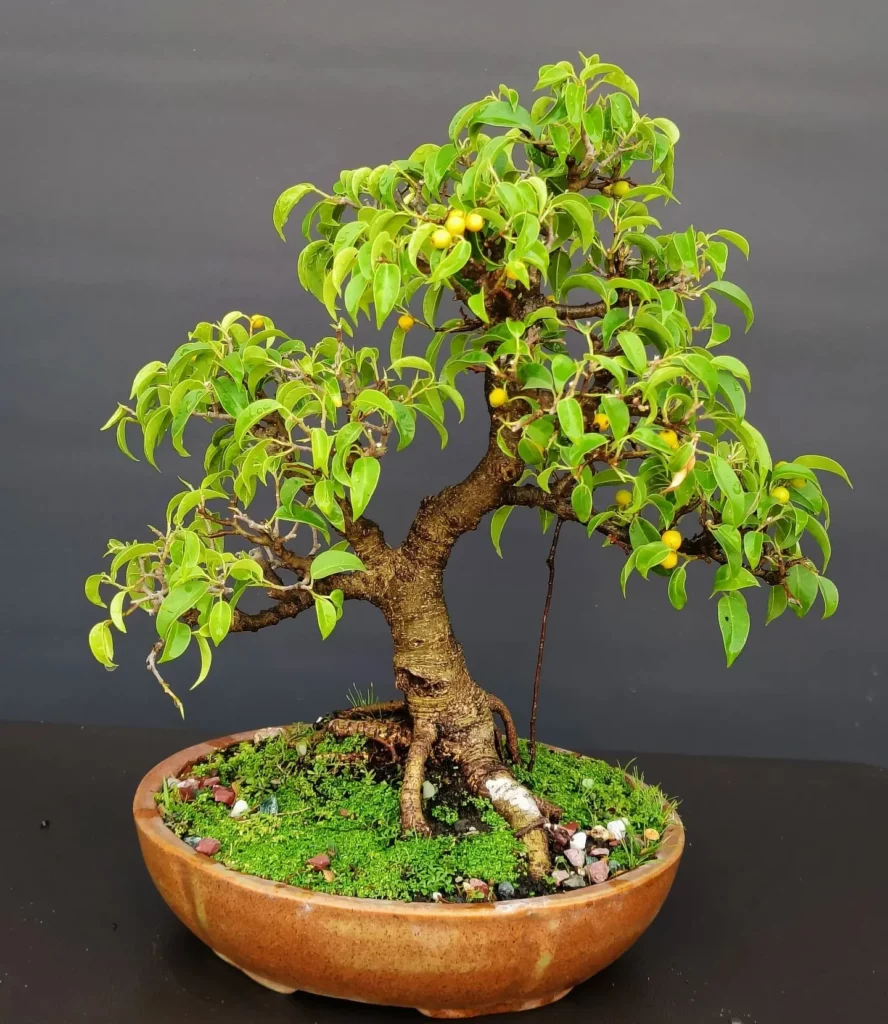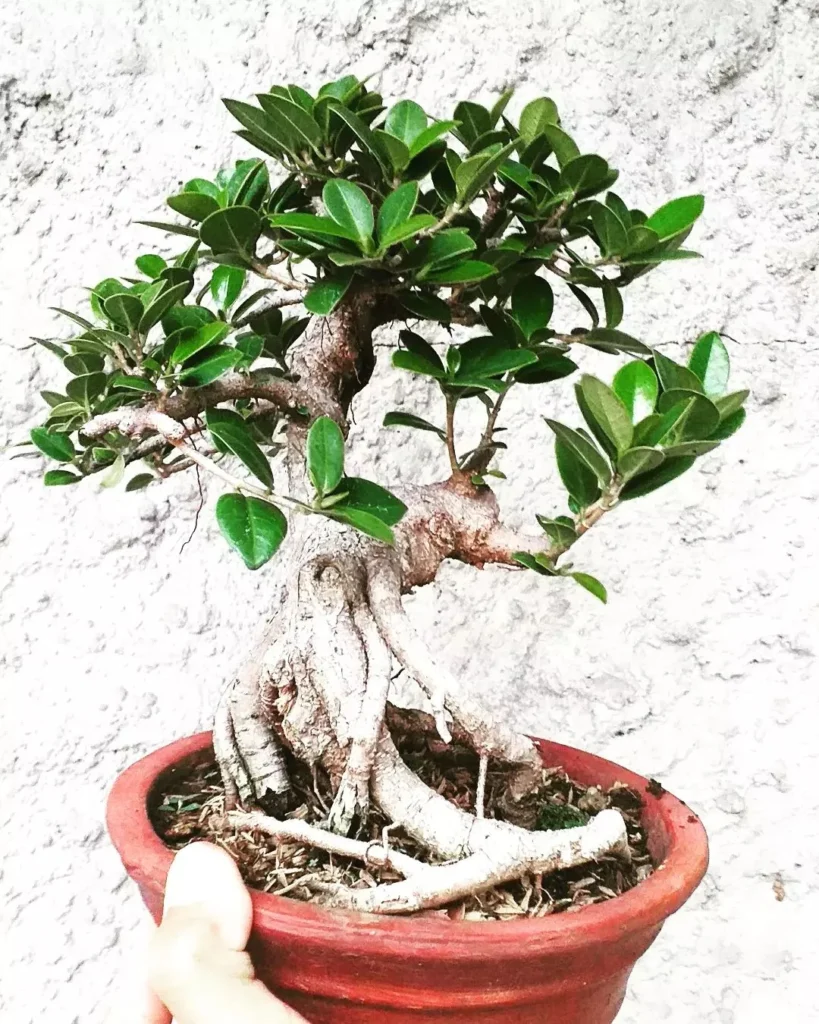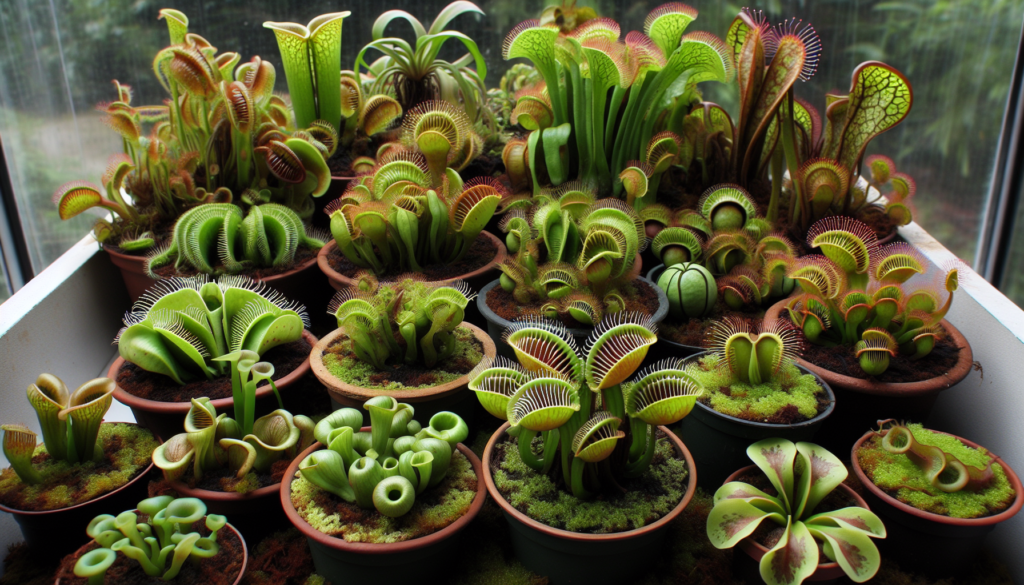Ficus plants are known for their stunning foliage, which can come in various shades of green, burgundy, or variegated patterns. The leaves of ficus plants can vary in texture, ranging from delicate and papery thin to thick and leathery.
Appearance of Ficus Plants
Ficus plants offer a diverse selection of varieties, each with its own unique appearance. There are upright trees that can grow tall and majestic, shrubby plants that add a bushy and compact look to your space, weeping plants with elegantly cascading branches, climbing plants that can be trained to grow on trellises or walls, and creeping plants that create a lush carpet-like effect.
While some ficus varieties produce sweet edible fruits, many are purely ornamental and rarely bloom or bear fruit. These ornamental varieties are prized for their beautiful foliage and don’t require fruit production to make a statement in your indoor garden.
About the Swiss Cheese Plant

To ensure the successful growth of your indoor ficus plants, it’s essential to provide them with the right amount of light. Ficus plants thrive in bright indirect light, which replicates their natural habitat. Here are some key considerations to keep in mind:
- Placement: Position your ficus plant near a window that receives bright, indirect light. This will provide the plant with the necessary light energy it needs for photosynthesis.
- Avoid direct sunlight: Although ficus plants love light, direct sunlight can cause harm. Exposing them to direct sunlight can lead to leaf drop or scalding. It’s best to keep your ficus plant away from windows where it will receive direct sunlight.
- Stable light environment: Ficus plants are sensitive to sudden changes in light. To ensure their well-being, maintain a stable light environment by avoiding frequent relocation of the plant.
Watering Ficus Plants
Proper watering is crucial for the health of your indoor ficus plants. Overwatering is a common problem that you should avoid. To ensure optimal watering, follow these guidelines:
- Check the moisture level of the soil regularly by touching the top 2 inches with your finger. Only water your ficus plant when the soil feels dry at that depth.
- When it’s time to water, thoroughly saturate the soil until the excess moisture drains out of the pot’s drainage holes at the bottom. This ensures that the water reaches the plant’s root system.
- In winter, when ficus plant growth slows down, reduce the frequency of watering. Allow the soil to dry out more before watering.
In addition to watering the soil, it’s a good idea to periodically spray or wipe down the leaves of your ficus plant. This helps to remove dust and keeps the foliage clean and healthy.
Fertilizing Ficus Plants
Ficus plants thrive when they receive regular fertilizing during their active growing season, which typically occurs between spring and early fall. Fertilizing your indoor ficus plants is an important aspect of their care routine, as it helps promote healthy growth and development.
To effectively fertilize your ficus plants, it is recommended to use a balanced liquid fertilizer once a month at half strength. This ensures that your plants receive the necessary nutrients without risking over-fertilizing, which can be detrimental to their health.
When applying the fertilizer, follow the instructions provided on the product packaging. Generally, you will dilute the liquid fertilizer as directed and apply it directly to the soil around the base of the plant. Make sure to evenly distribute the fertilizer to avoid concentrated areas that may lead to burning or damage.
It is important to note that during the fall and winter months when the growth of ficus plants naturally slows down, you should cease fertilizing. This allows the plants to enter a dormant phase and prepare for their next growth cycle.
Light and Temperature Requirements
If you’re growing ficus plants indoors, potting is an essential part of their care. Regular repotting every other year helps keep your ficus plant at a manageable size and ensures its continued health and growth. Here’s a step-by-step guide on how to pot your ficus plants:
- Check for root visibility: Inspect the drainage holes at the bottom of the pot. If you see roots peeking through, it’s time to repot your ficus plant.
- Select a larger pot: Choose a pot that is slightly larger in diameter and slightly deeper than the previous one. This allows room for your ficus plant to grow and develop.
- Prepare the potting soil: Use fresh potting soil that is well-draining. Ficus plants prefer a well-draining soil mix that retains some moisture but doesn’t become waterlogged.
- Gently tease out the roots: If the roots of your ficus plant are tightly wound around the root ball, gently tease them out before placing the plant in the new pot. This helps promote healthy root growth.
- Place the plant in the new pot: Position your ficus plant in the center of the new pot, ensuring that it is upright and stable.
- Add potting soil: Fill the pot with potting soil, firming it gently around the base of the plant to provide stability. Leave some space at the top to allow for watering.
- Water the plant: After potting, give your ficus plant a thorough watering. This helps settle the soil and ensures proper hydration for the roots.
Propagation of Ficus Plants
If you’re interested in expanding your indoor ficus plant collection or want to share the beauty of these plants with friends and family, propagation is a great way to do it. Ficus plants can be easily propagated through stem cuttings and air layering. Both methods are simple and effective, allowing you to grow new plants from your existing ones.
To propagate ficus plants through stem cuttings, start by selecting a healthy branch from the tip of the plant. Cut a 4-6 inch section, making sure to remove the lower leaves. This will allow the cutting to focus its energy on root development. Place the cutting in a well-draining potting mix, making sure the soil is moist but not waterlogged. Keep the cutting in a warm and humid environment, such as a greenhouse or covered with a plastic bag, to encourage root growth. Within a few weeks, roots should start to develop, indicating that the cutting is ready to be potted and grown as a new ficus plant.
Air layering is another effective method for propagating ficus plants. This technique involves making a small cut in a healthy branch and wrapping it with moist sphagnum moss or rooting hormone. Next, cover the moss or hormone with plastic wrap to create a humid environment that promotes root growth. Over time, roots will develop at the site of the cut, allowing you to separate the propagated plant from the parent plant and pot it on its own.
Growth and Development of Ficus Plants
Ficus plants are known for their impressive growth and development. Depending on the variety, these indoor ficus plants can reach varying heights and widths, making them a striking addition to any space.
One of the notable characteristics of ficus plants is their fast growth rate. With proper care and optimal growing conditions, ficus plants can quickly transform from small saplings to lush, thriving specimens. They have the ability to produce new leaves and branches regularly, which contributes to their overall growth and development.
To keep your ficus plant at a manageable size, regular pruning is essential. Trimming back unwanted branches and foliage not only helps control the plant’s height and width but also promotes a fuller and more attractive appearance.
Ficus plants are also highly adaptable when it comes to shaping and training. With careful pruning and guidance, you can shape your ficus plant to fit your personal preferences and decor style. Whether you prefer a more compact and bushy form or a taller and more tree-like structure, ficus plants can be molded to suit your needs.
Regular care is crucial for the healthy growth and development of ficus plants. Providing the right amount of light, water, and nutrients are key factors in ensuring optimal growth. Additionally, ficus plants benefit from repotting every couple of years to provide adequate space for their expanding root systems.
Overall, ficus plants are dynamic and resilient indoor plants that thrive in the right conditions. With proper care and attention, you can enjoy the remarkable growth and development of ficus plants, creating a vibrant and captivating atmosphere in your home or office.
Pests and Diseases of Ficus Plants
Ficus plants are known to encounter various pests and diseases that can affect their overall health and appearance. Common problems with ficus plants include infestations of spider mites, mealybugs, aphids, and scale insects, as well as fungal diseases. It is important to be proactive in preventing these issues and taking necessary steps to maintain the health of your ficus plants.
Common Problems
- Spider Mites: These tiny pests can cause webbing, yellowing leaves, and overall decline in the plant’s health. Regularly inspect the plant for any signs of these pests, such as tiny webs or speckled leaves.
- Mealybugs: Mealybugs are small, white, cotton-like insects that often infest the leaves and stems of ficus plants. They can cause stunted growth, discoloration, and the secretion of a sticky substance known as honeydew.
- Aphids: Aphids are small, soft-bodied insects that can be found in clusters on the undersides of leaves. They can cause curling leaves, yellowing, and the spread of viral diseases.
- Scale Insects: Scale insects are tiny, immobile pests that attach themselves to the stems and leaves of ficus plants. They can cause yellowing, leaf drop, and the production of a sticky substance called honeydew.
- Fungal Diseases: Ficus plants are susceptible to fungal diseases, such as leaf spot and root rot. These diseases are often caused by overwatering or poor drainage.
Prevention and Treatment
To prevent ficus plant problems, it is important to provide proper care and maintenance:
- Watering: Avoid overwatering or underwatering your ficus plants. Instead, water them when the top 2 inches of soil feel dry. Ensure proper drainage to prevent the development of fungal diseases.
- Humidity: Maintain consistent humidity levels around your ficus plants, as dry conditions can make them more vulnerable to pests and diseases.
- Inspect Regularly: Regularly inspect your ficus plants for any signs of pests or diseases. Look for sticky substances, discoloration, distorted leaves, or the presence of insects.
- Prompt Treatment: If you notice any issues, take prompt action to treat them. Use insecticidal soap or horticultural oils to control pests, and treat fungal diseases with appropriate fungicides.
Using Ficus Plants in Your Home or Office
Ficus plants can be a delightful addition to your home or office decor, bringing beauty, greenery, and a touch of nature to your space. Whether you have a small apartment or a spacious office lobby, there are various creative ways to display ficus plants that will enhance the ambiance and create an inviting atmosphere.
1. Choosing the Perfect Pot
When displaying your ficus plant, consider using decorative pots that complement the style of your space. Terracotta pots offer a natural and rustic look, while ceramic pots can add a pop of color. Hanging pots or macrame plant hangers can be a great option for creating a vertical display, especially if you have limited floor space.
2. Placing on Shelves or Tables
One simple way to display your ficus plant is by placing it on shelves or tables. This allows the plant to be a centerpiece or a focal point in your room. Choose a spot near a window that provides the right amount of indirect light, and let your ficus plant brighten up the space with its vibrant foliage.
3. Creating Group Displays
For a more eye-catching and dynamic display, consider grouping different ficus plants together. Mix and match various ficus varieties to add texture and visual interest. You can also combine your ficus plants with other houseplants or decorative elements, such as artwork or sculptures, to create a visually appealing arrangement.
4. Adding Drama with Large Ficus Plants
If you have a large and well-lit area in your home or office, consider using a larger ficus plant as a statement piece. Place it in a spacious corner or beside a window to create a dramatic focal point. The height and lush foliage of a mature ficus plant can instantly transform a room, giving it a fresh and vibrant vibe.
5. Inviting Greenery into Office Spaces
Ficus plants can also be a perfect addition to office spaces, such as lobbies, waiting areas, or conference rooms. They not only bring a touch of nature but also create a calming effect, making the environment more inviting for clients, employees, and visitors. Consider using medium-sized ficus plants in stylish pots to create a professional and serene atmosphere.
6. Seasonal Decor with Ficus Plants
Get creative with your ficus plants by incorporating them into your seasonal decor. For example, during the holiday season, you can decorate your ficus plant with small ornaments or twinkling lights. This adds a festive touch and keeps your ficus plant looking fabulous all year round.
Ficus Varieties to Try
When it comes to ficus plants, there is a wide variety to choose from that can thrive in your indoor environment. Adding a touch of beauty and interest to your space, these popular ficus varieties are sure to delight:
- African Fig
- Lily Pads™ Umbrella Fig Tree
- Chroma™ Belize Rubber Plant
- Chroma™ Chloe Rubber Plant
- Cling-On™ Anastasia Weeping Fig
- Cling-On™ Samantha Weeping Fig
- Bambino Dwarf Fiddle Leaf Fig
Each of these ficus varieties has its own unique characteristics, adding a personal touch to your indoor space. Whether you prefer the vibrant foliage of the African Fig or the delicate leaves of the Bambino Dwarf Fiddle Leaf Fig, these ficus plants are sure to bring beauty and greenery into your home or office.
Conclusion
Growing ficus plants indoors can be a rewarding experience that adds beauty and greenery to your home or office. By following this comprehensive ficus care guide, you can cultivate healthy and thriving ficus plants in any indoor space.
Remember to provide your ficus plants with the appropriate light conditions, placing them in a window that receives bright indirect light. Avoid direct sunlight, as it can cause leaf drop or scalding. Proper watering is crucial, so water your ficus plants only when the top 2 inches of soil are dry, and be sure to use well-draining pots to prevent overwatering.
Fertilize your ficus plants during the active growing season with a balanced liquid fertilizer. Repot them every other year to ensure they have enough space and fresh soil. Keep an eye out for common pests and diseases, such as spider mites or mealybugs, and take immediate action to prevent or treat them. With proper care and attention, your ficus plants will thrive and create a vibrant oasis in your indoor space.
FAQ
Q: How do I care for ficus plants indoors?
A: To care for ficus plants indoors, you need to provide them with bright indirect light, water them when the top 2 inches of soil is dry, fertilize them monthly during the active growing season, and repot them every other year. Regularly inspect the plant for signs of pests or diseases and take action to prevent or treat any issues.
Q: What do ficus plants look like?
A: Ficus plants have attractive foliage that can be green, burgundy, or variegated. The leaves can range from thin and papery to thick and leathery. Ficus plants come in different varieties, including upright trees, shrubby plants, weeping plants, climbing plants, and creeping plants.
Q: How much light do ficus plants need?
A: Ficus plants require bright indirect light to thrive indoors. Place them in a window that receives indirect bright light. Avoid direct sunlight, as it can cause leaf drop or scalding. Provide a stable light environment to prevent sensitivity to changes in light.
Q: How often should I water my ficus plants?
A: Water your ficus plants when the top 2 inches of soil is dry. Overwatering can be a common problem, so ensure good drainage and avoid waterlogged soil. In winter, reduce watering when plant growth slows. Additionally, spray or wipe down the leaves occasionally to remove dust.
Q: How do I fertilize ficus plants?
A: Ficus plants benefit from regular fertilizing during the active growing season. Apply a balanced liquid fertilizer once a month at half strength. Cease fertilizing during the fall and winter when plant growth slows down. Fertilizing helps promote healthy growth and development.
Q: How do I pot ficus plants?
Ficus plants are typically grown in pots indoors. Repot them every other year to keep them at a manageable size. When repotting, choose a slightly larger pot with good drainage. Gently tease out tightly wound roots and use fresh potting soil. Water the plant well after repotting.
Q: How can I propagate ficus plants?
A: Ficus plants can be propagated through stem cuttings and air layering. To propagate through stem cuttings, take a 4-6 inch cutting from the tip of a healthy branch, remove lower leaves, and place it in well-draining potting mix. For air layering, make a small cut in a healthy branch, wrap with moist sphagnum moss or rooting hormone, and cover with plastic wrap to create a humid environment for root development.
Q: How do ficus plants grow and develop?
A: Ficus plants can grow to varying heights and widths depending on the variety. They are generally fast growers and can be shaped and trained through pruning and repotting. Regular care and optimal growing conditions promote healthy growth and development.
Q: What pests and diseases should I watch out for with ficus plants?
A: Ficus plants are susceptible to pests like spider mites, mealybugs, aphids, and scale insects, as well as fungal diseases. To prevent infestations and diseases, provide proper care and maintenance. Regularly inspect the plant for signs of pests or diseases and take prompt action to prevent or treat any issues.
Q: How can I use ficus plants in my home or office?
A: Ficus plants can add beauty and greenery to your space. Place them in decorative pots on shelves or tables. Use larger ficus plants as focal points in well-lit areas. Group different ficus plants together for an attractive display. Consider different types of pots and containers to complement the style of your space.
Q: What varieties of ficus plants should I try?
A: There are many ficus varieties to choose from, including African Fig, Lily Pads™ Umbrella Fig Tree, Chroma™ Belize Rubber Plant, Chroma™ Chloe Rubber Plant, Cling-On™ Anastasia Weeping Fig, Cling-On™ Samantha Weeping Fig, and Bambino Dwarf Fiddle Leaf Fig. Each variety has its own unique characteristics that can add beauty and interest to your indoor space.











